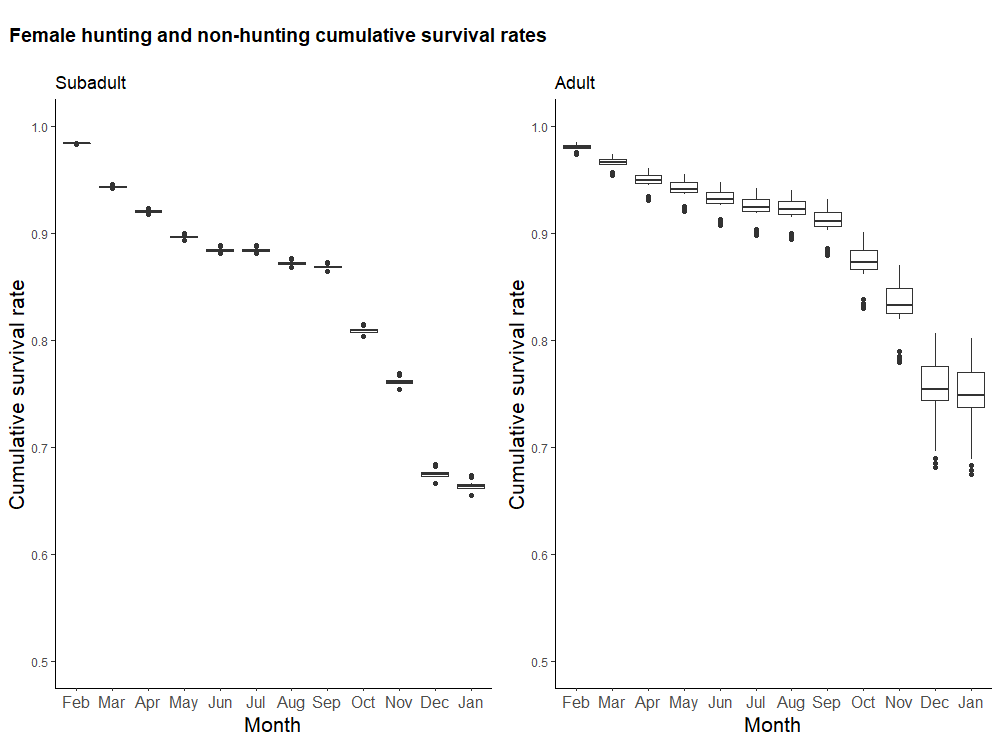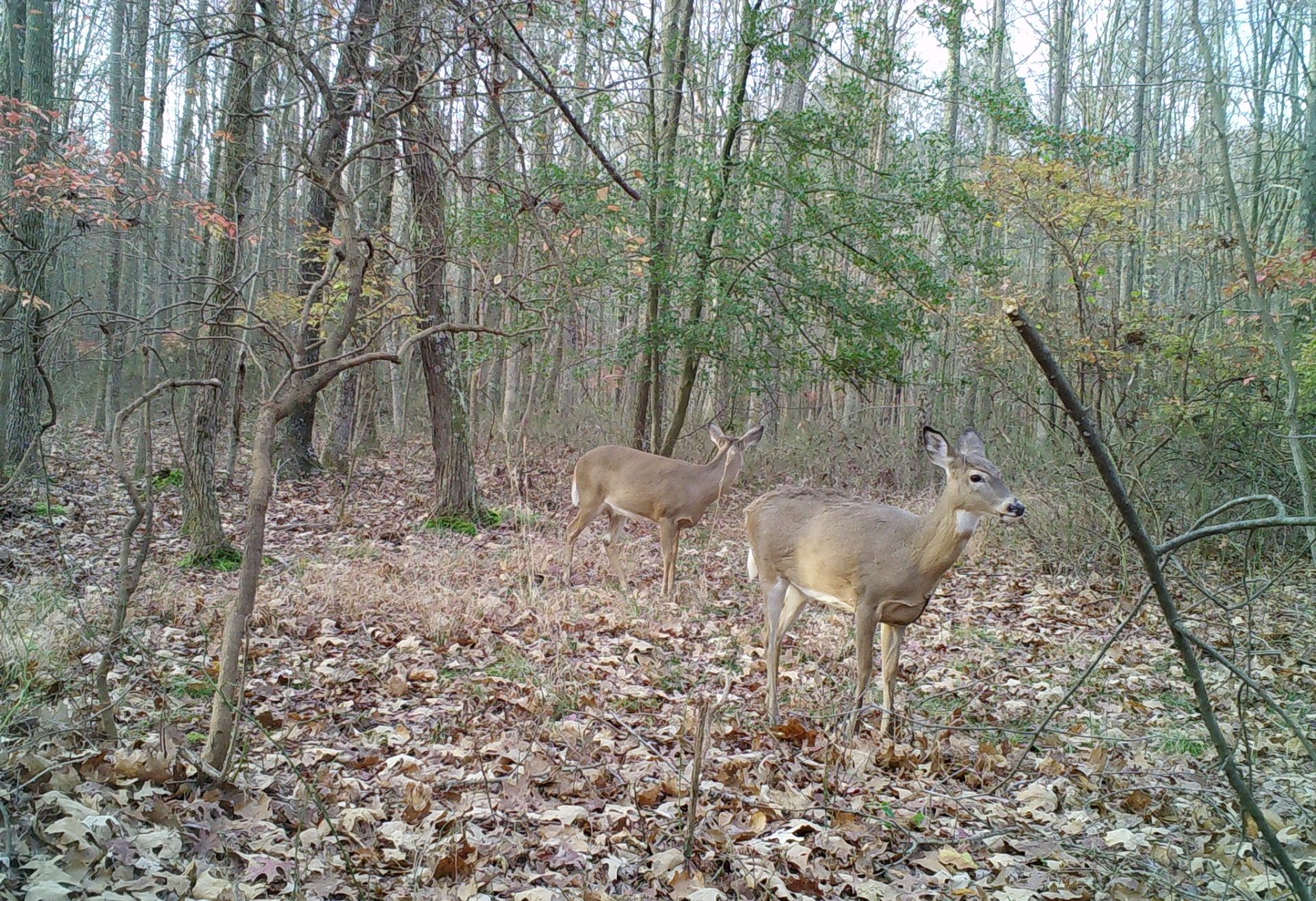I was sitting in my daughter’s tree stand this week (it’s really my tree stand that is named for her, which is another story) when just at dusk I heard a red squirrel rustling down and to my left. Of course, it wasn’t a red squirrel.
It was a deer.
A doe fawn and she was oblivious to my presence. Any adult doe I’m sure would have looked up and stared at me to see if I would move.
You don’t have to spend much time watching deer, especially does with fawns, to know that adult deer are much more alert and attuned to their surroundings. Sometimes you can wave “Hello” to a fawn and it will stop and look at you for a bit then go back to what it was doing. An adult doe, on the other hand, won’t wait to find out if you’re really being friendly.
So how long might they sport a radiocollar? Are there differences in survival of subadult (1.5-year-old) and adult females like we see in males?
We have had research projects to look at the difference in subadult and adult female harvest rates. The results were mixed – some study areas indicated subadults had different harvest rates from adults.
But after we look at 20 years of survival data, we start to see some patterns. The graph below shows the cumulative monthly survival rate (Graph on left – Subadults are 1.5 years of age; Graph on right – Adults are all older deer).
As a reminder of how to interpret these, that first boxplot for February shows the median for all studies (thick horizontal line), the box around it includes 50% of the survival estimates (25th to 75th percentiles), and the whiskers coming off the box are estimates within 1.5x the inter-quartile range. The second boxplot (March) represents the probability of surviving February AND March. The third boxplot represents the probability of surviving February, March, and April…and so on. The last boxplot is the probability of surviving 12 months: February through January.
Subadult female survival looks similar to their subadult male counterparts. In fact, graphs track pretty much the same for adult male and female deer through September as well. But when hunting season arrives, things are vastly different.

After hunting season, over half of the females are still alive. Conserving battery life of a radiocollar is a given when on females as they are likely to be carrying it around for multiple seasons and years.
Then it’s a matter of research objectives. Big picture or fine scale movements. Because you can’t have both.
–Duane Diefenbach
[A side note: The less variability in subadult survival rates is more a function of data than actual variability. We have less data on subadults so we are able to detect less variability related to study area or year. The overall mean survival rate is trustworthy, it’s just that there is surely more variability over space and time than we can detect.]
